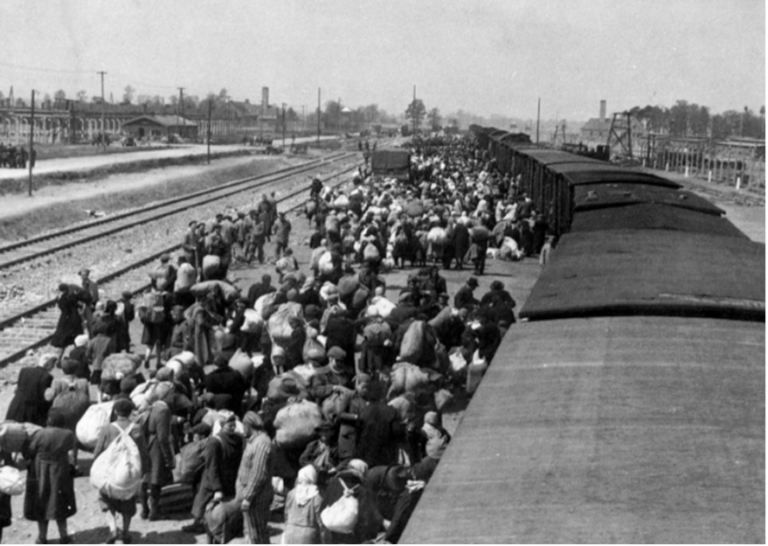Part 3
Descent into Darkness (1944)
The Auschwitz concentration camp complex was the largest of its kind developed by the Nazi regime. There were three camps: Auschwitz I, the main camp, was used for forced labor and targeted killings. Auschwitz III or Auschwitz-Monowitz, was also forced labor for the manufacture of synthetic rubber and fuels. Auschwitz-Birkenau, Auschwitz II, had the largest prisoner population—divided into ten sections separated by electrified fences—and also containing the facilities for a killing center. Four large crematorium buildings were constructed which used Zyklon B in their gas chambers. They housed eight gas chambers and 46 ovens capable of disposing of 4,400 corpses a day.

Auschwitz: Snow-covered personal effects of those deported to the Auschwitz concentration camp in Poland litter the train tracks leading to the camp's entrance, circa 1945 (Hulton Archive - Getty Images).

Arrival: Doors being opened The Auschwitz Album, Yad Vashem.

Platform: The main platform, completed in May 1944, The Auschwitz Album, Yad Vashem.

Selection: Jews undergoing the selection on the Birkenau platform. Veteran inmates are assisting Nazi soldiers, The Auschwitz Album, Yad Vashem.

"Kanada" section, the arrival of the trucks and the initial sorting of the Jews' possessions. The Auschwitz Album, Yad Vashem
Maps
United States Holocaust Memorial Museum—Holocaust Encyclopedia
United States Holocaust Memorial Museum—Holocaust Encyclopedia

